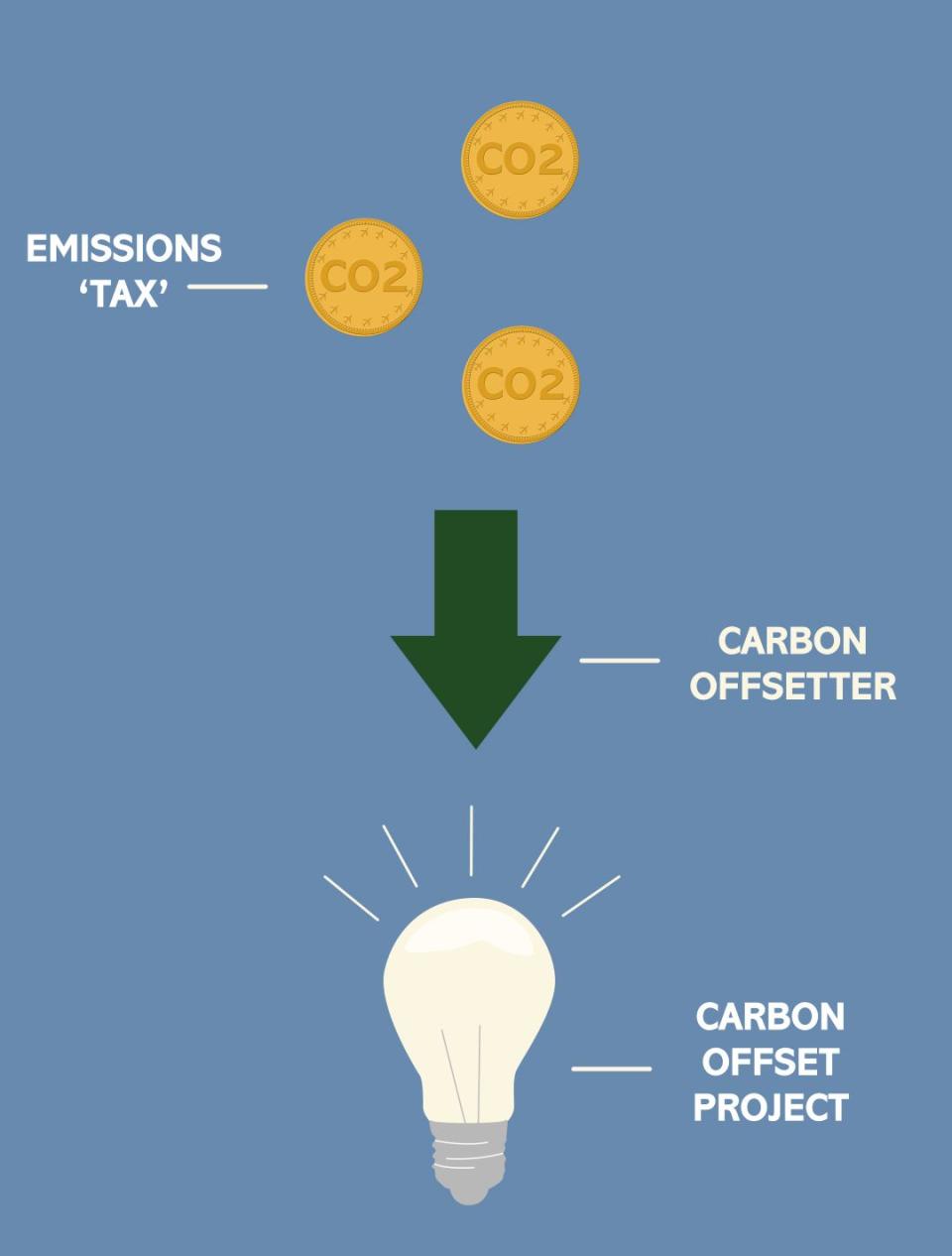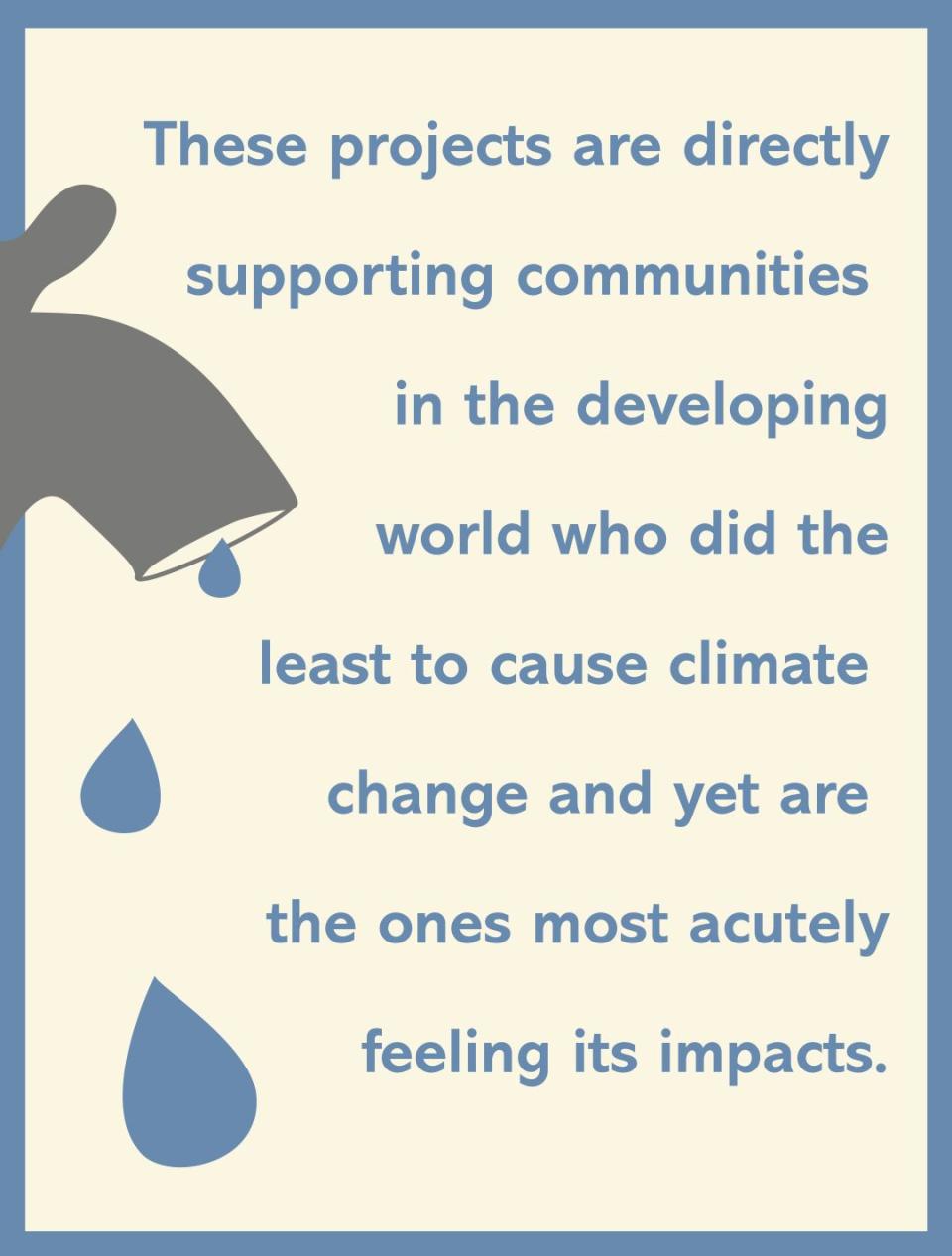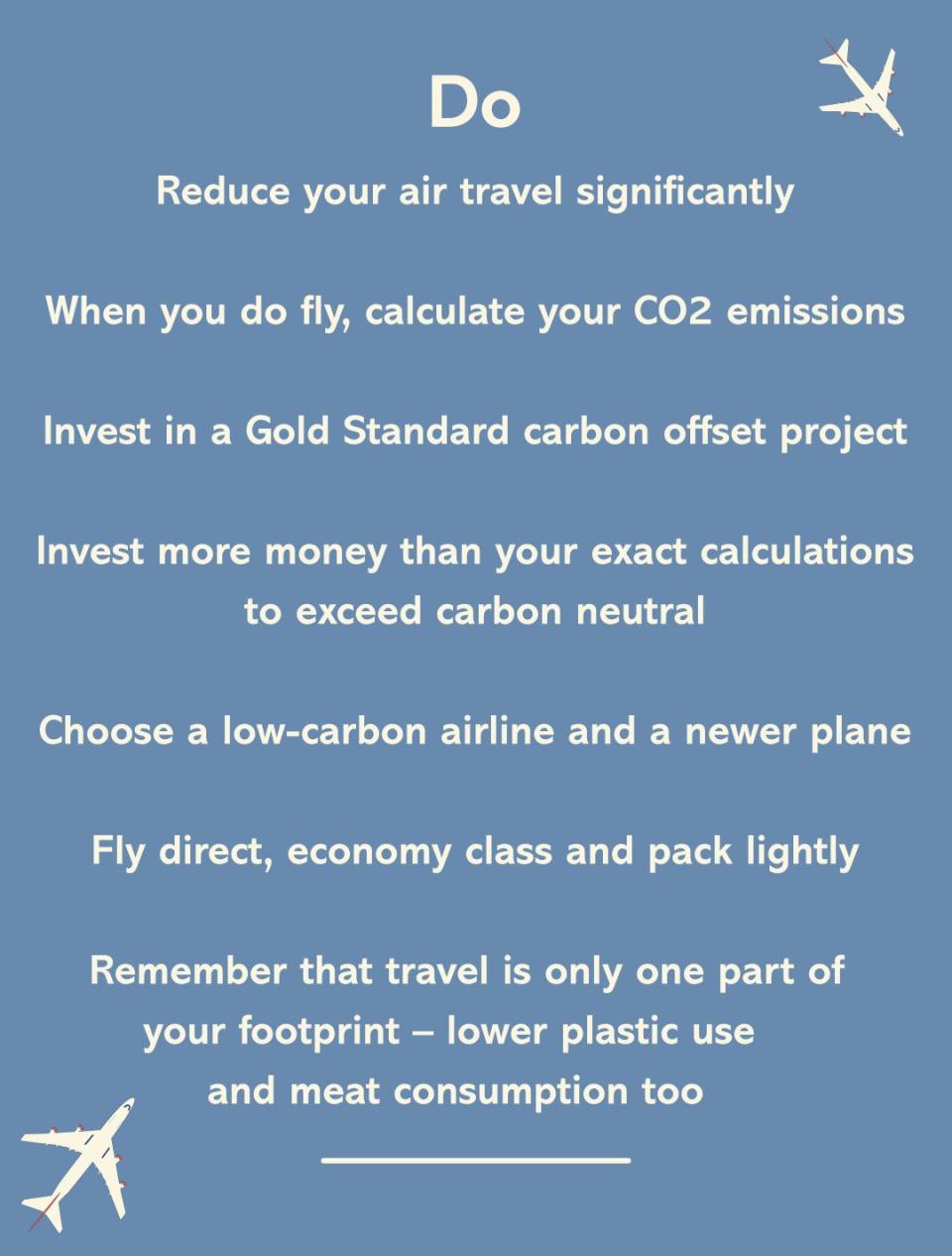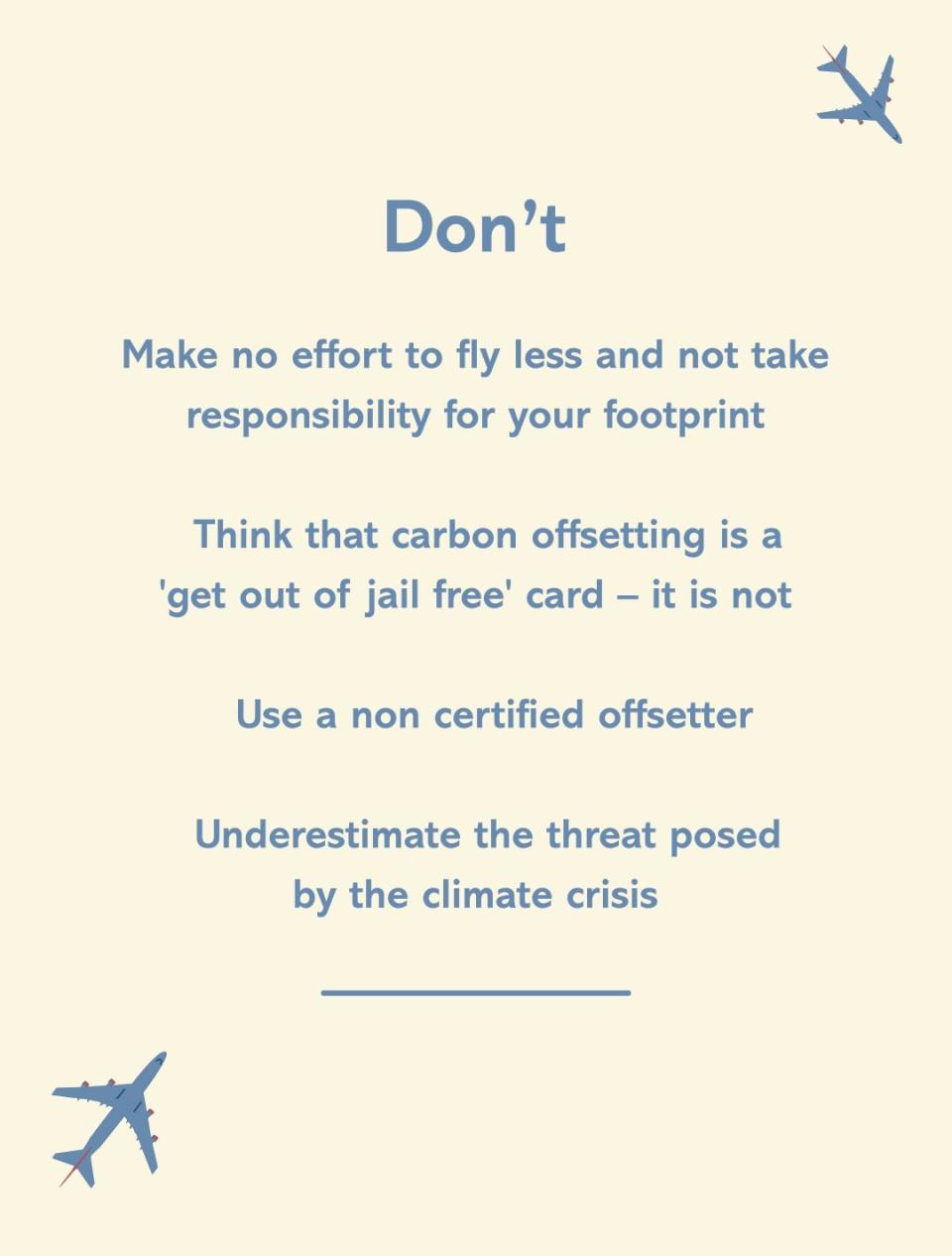Does carbon offsetting work? Here's everything you need to know

Carbon offsetting: is it a legitimate way to counteract the damaging environmental impact of air travel or is it a flimsy idea used to make us feel less guilty about boarding a plane in the first place?
Before we explore the issue, it's interesting to note that air travel makes up about 6% of the UK's emissions, but most of the country don’t fly at all. In fact, 70% of flights are taken by just 15% of the population. So, if that 15% could make positive, eco-forward changes to their travel behaviour, it could make a real difference overall.
Here, we present the facts. Keep reading until the end for the seven dos and four don'ts of carbon offsetting.
What is carbon offsetting?
Carbon offsetting is when an individual or business invests in carbon-reducing projects in order to balance out, or exceed, their carbon emission footprint. These projects vary greatly, from tree-planting schemes in the UK to energy-saving lightbulb installation programmes in Africa.
Using a CO2 carbon emissions calculator, you can see exactly how many tonnes of carbon dioxide have been emitted to fuel an event – be it a flight, a car journey or lighting your home for a week. There are a number of organisations who then translate the CO2 tonnage calculation into a monetary value. This sum is how much you need to donate to a carbon reduction project to counteract your action.
"Put simply," say Carbon+Care, a Gold Standard offsetter, on their website. "Offsetting means buying carbon credits equivalent to your carbon impact. This means you compensate for every tonne of CO2 you emit by ensuring there is one tonne less in the atmosphere."
For example, the Atmosfair carbon calculator (recommended to us by the experts) suggests that a return flight from London to Paris emits between 0.09 to 0.13 tonnes of CO2, depending on which airline you choose. This equates to a donation of £3 to £10, per person, to an offset project.

Does carbon offsetting work?
The debate over whether carbon offsetting is a viable solution to help resolve the climate crisis has picked up momentum in recent years. Some experts believe it is a 'cop-out' which allows people to carry on with unsustainable behaviours while reducing their guilt or incentive to change. On the other hand, others believe it is genuinely effective as long as people use it properly and responsibly, alongside a sharp change in travel behaviour.
Flying is one of the most carbon-intensive actions a person can do, so there is no denying that the best way to reduce your carbon footprint is to stop flying all together. But some experts believe that the use of carbon offsetting plus a notable reduction in overseas travel can be effective.
Argument: Carbon offsetting plus reduced travel works
"It’s not about never flying again, but about not making the decision to hop on a plane too lightly," says Hermione, founder of We Are Donation, a website that helps individuals and businesses pledge to operate more sustainably. "Holidaying closer to home and embracing land-based travel are the key things to think about – and they can make for a far more enjoyable trip. However, where you have to get on the plane, offsetting is a no-brainer. It’s easy, cheap and does good."
Sarah Leugers, director of communications at Gold Standard (the certified body for carbon offset projects) agrees, saying: "Carbon offsetting is a way to reduce global emissions at a time when we need to do so by all means available to us. When done using the most robust standards, it can also contribute to sustainable development."
Sarah details exactly how carbon offsetting can help, explaining that it addresses:
the emissions gap left by countries who have not yet met their targets set out in the Paris Agreement
the finance gap where many carbon-reducing projects do not receive enough funding
the time gap that favours action now versus hoping that national/international policy will change in time
"I believe it’s irresponsible and ultimately damaging to the climate (and in the case of Gold Standard projects, punishing communities in the developing world) to categorically say that offsetting 'doesn’t work,'" continues Sarah.
"Frankly, we should be paying for our pollution and carbon offsetting is fundamentally a self-imposed carbon tax that is one measure to take accountability for that pollution."
Argument: Carbon offsetting is a distraction technique
But this isn't a view shared by all and Krissy Roe, head of values at Responsible Travel (a hub for sustainable adventures), is very much opposed. “Carbon offsetting might sound like a great idea," says Krissy. "But in fact, it’s a comfortable delusion – and its rising popularity is a real concern. For a start, about 85% of the very best offset schemes are ineffective. These schemes encourage the convenient idea that we can fly guilt-free, and that’s just not true.
"Offsets are a cheap way for aviation to appease the climate-conscious, while avoiding the serious investment into cleaner technology."
The one thing they all agree on
If used, carbon offsetting can not be the sole action an individual takes to reduce their footprint. It must be used in conjunction with serious behavioural changes.
"Carbon offsetting should be deployed alongside of, rather than instead of, ambitious reduction of one’s own footprint so that a person or business is offsetting genuinely unavoidable emissions," says Sarah.
"It’s far from a ‘get out of jail free’ card, and doesn’t take away from the fact that it’s better not to get on the plane in the first place," says Hermione.
"Significant and urgent reduction in carbon is the only way we can avoid uncontrollable climate heating. We have to adapt – that is the only option,” says Krissy.
What are the best carbon offset investments?
One of the most popular go-tos when looking into carbon offsetting is donating to tree-planting projects. But, with the timeframe in which we have a chance to turn the climate crisis around getting ever smaller, and with urgency mounting, that might not be the best option.

"It's the delay factor – planting trees is brilliant, but not to offset," continues Krissy from Responsible Travel. "It’ll take years, decades even, for a sapling to mature into a carbon-hungry oak – time we don’t have."
Some experts suggest that offset schemes which focus on making renewable energy more accessible worldwide are a better and more effective investment. This is because:
a) non-renewable energy sources and the burning of fossil fuels lie at the very core of the climate crisis
b) swaps to energy-efficient lightbulbs and stoves in third world countries are instant and make an immediate difference to CO2 emissions
So it's about choosing the right organisation and a project from an internationally-recognised standard. All projects from the Gold Standard website are fully vetted and disclose the exact amount of money that goes directly to each project. They also retire the carbon credits you’ve purchased in a public, transparent registry with your name. You can refer to official offset best practices here.

We asked Gold Standard's director of comms, Sarah, which projects she thinks are worthwhile. "If you care about climate justice, I would select a community-based project like an improved cookstove or a clean water access project," Sarah explains. "These projects are directly supporting communities in the developing world who did the least to cause climate change and yet are the ones most acutely feeling its impacts. They are also more complex and generally more expensive to develop, so have a greater need for funding."
Hermione from We Are Donation agrees, saying: "I’d recommend leaving it to the experts, trust that a Gold Standard offsetter will have screened the projects they’re funding and will invest your money effectively."
Hermione goes on to make another excellent point: "After all, if you’re going to spend time and energy researching a project, it’d be far better to spend that time thinking about how to reduce your footprint rather than on how to offset it."
How to reduce your footprint when you DO travel
“If you do choose to fly, there are steps you can take to reduce your impacts. Not only are these more planet-conscious choices, but a focus on local will help communities and make for a richer, more enjoyable experience for you," explains Krissy from Responsible Travel, who suggests we all take the following steps:
pack light and fly economy: the lighter the load, the less carbon used
fly direct and on newer, more fuel-efficient aircraft
when abroad, eat locally-sourced, seasonal produce to minimise food waste
cut back on meat and dairy
opt for hotels that use renewable energy
Sarah weighs in, reminding people to do their research before booking any trips and urging us not to consider it like-for-like. "Consider going beyond simply compensating for your emissions and purchase more carbon credits than the equivalent to your carbon footprint," advises Sarah Leugers. "In fact, while the idea is to ‘balance’ CO2, we don’t explicitly encourage using ‘carbon neutral’ claims as it can be interpreted as meaning that you’ve had no climate impact. You have. But you’ve also taken accountability for this and made a positive contribution to reduce emissions elsewhere." Sarah suggests:
ensure that alternative means of travel – like train or car – are not possible
choose a lower-carbon airline
select coach rather than business class seats
calculate your flight’s footprint using Atmostfair and then go to Gold Standard’s website to purchase certified carbon credits
Donate more credits than are calculated to exceed carbon neutral


Like this article? Sign up to our newsletter to get more articles like this delivered straight to your inbox.
You Might Also Like

 Yahoo News
Yahoo News 
